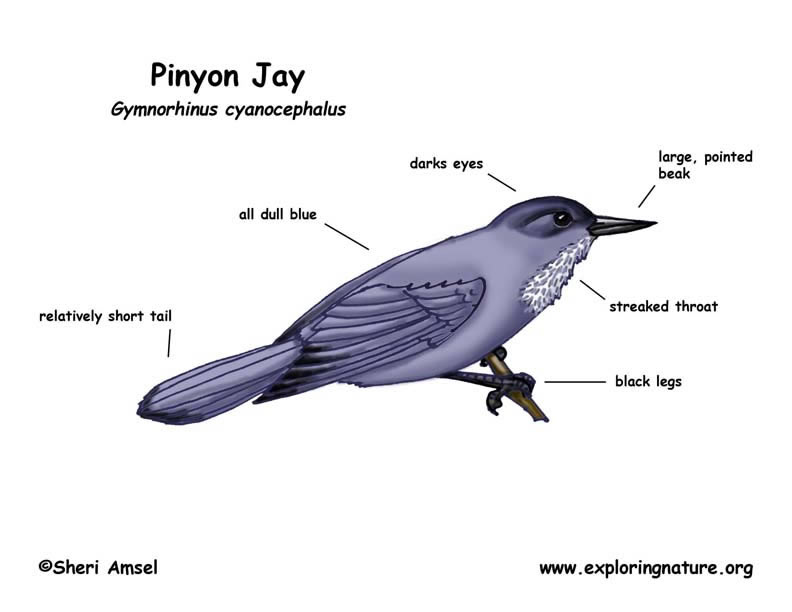

They are found west of the Rocky Mountains from Montana south into New Mexico and west to Oregon and California.
They live in scrubby areas with juniper and sage and open forest of oak and pine.
They are a faded blue all over with a lighter throat with blue spotting. They have a shorter tail than the other jays. They have black legs and beak. The beak is large and powerful for breaking into pinecones.
They hide batched of seeds for feeding on later. In the winter, they will sometimes travel in large flocks searching farmlands for seeds.
They eat nuts and pine seeds, insects and even small reptiles, birds and mammals.
Females lay up to 6 light blue eggs with dark spots in a nest made of sticks and grass. They build the nest in a pinyon pine tree or juniper bush.
Kingdom: Animalia
Phylum: Chordata
Subphylum: Vetebrata
Class: Aves
Order: Passeriformes
Family: Corvidae
Genus: Gymnorhinus
Species: G. cyanocephalus
When you research information you must cite the reference. Citing for websites is different from citing from books, magazines and periodicals. The style of citing shown here is from the MLA Style Citations (Modern Language Association).
When citing a WEBSITE the general format is as follows.
Author Last Name, First Name(s). "Title: Subtitle of Part of Web Page, if appropriate." Title: Subtitle: Section of Page if appropriate. Sponsoring/Publishing Agency, If Given. Additional significant descriptive information. Date of Electronic Publication or other Date, such as Last Updated. Day Month Year of access < URL >.
Amsel, Sheri. "Jay (Pinyon)" Exploring Nature Educational Resource ©2005-2024. December 13, 2024
< http://exploringnature.org/db/view/Jay-Pinyon >

